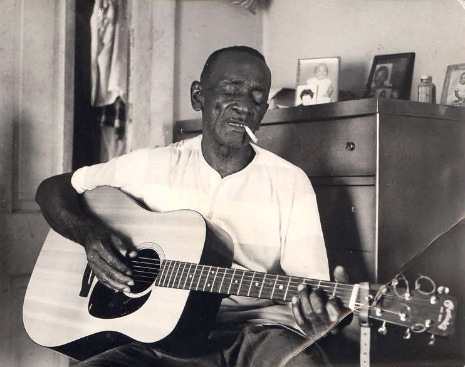
This soulful 1963 documentary directed by Dietrich Wawzyn and shot in gorgeous black and white for German TV takes us to the roadhouses, churches, pool halls and streets of the American south where something deep, powerful and poetic found expression in the blues, jazz, gospel and rock and roll. If one were to look for the spiritual core of the USA, direct your eyes and ears to the music and artists presented in this film.
On The Road Again reminds us of a world familiar and yet distant, a place that will never exist again but persists at the edges of our consciousness like the insistent memory of an old lover stuttering in the sprockets of memory’s dysfunctional machine, an America vaguely recalled which has been buried under a tacky facade called “America,” composed of viral shopping malls, endless interstates and cookie cutter suburbs that cover our land like a scab made of plastic and plywood.
The movie moves with a grace, energy and rhythm that echoes the music it documents. We follow the camera eye as it captures…
[...] Mance Lipscomb singing “Goin’ Down Slow” on his front porch in Navasota, then follows piano player Buster Pickens as he leads the film crew through Houston dives and pool halls looking for other musicians. They locate Lightnin’ Hopkins in a garage partaking in a game of chance, and Hop Wilson playing bluesy steel guitar in Miss Irene’s Tavern. In Dallas-Fort Worth piano player Whistlin’ Alex Moore whistles along to a rolling boogie woogie, and B.K. Turner, who recorded in the 1930s as Black Ace, plays his signature tune on lap top National steel guitar.
In San Francisco, Lowell Fulsom, one of the foremost shapers of West Coast blues is filmed, then across the Bay King Louis H. Narcisse, the spiritual leader of the Mt. Zion faith, at his Oakland temple leads his congregation in stirring gospel rockers like “Let It Shine.” Heading east, Rev. Louis Overstreet brings the gospel to the winos, gamblers, and the down and out on the streets of Tucson, Arizona.
In the shadow of Nashville’s Grand Ole Opry, the Blind James Campbell String Band, one of the few traditional black string bands ever filmed, plays “John Henry.” At the easternmost point of the journey, J.E. Mainer and his family band play the fiddle breakdown, “Run Mountain” in Concord, North Carolina.
Celebrated New Orleans clarinetist George Lewis is filmed at the newly opened Preservation Hall playing “Royal Garden Blues” and a plaintive version of “Burgundy Street Blues,” which is enriched by images of French Quarter street life. Piano player Sweet Emma Barrett gives a rough barrelhouse treatment to “I Ain’t Gonna give Nobody None of my Jelly Roll,” and the Eureka Brass Band plays at a funeral in the New Orleans tradition.
We need to keep the connection to the richness of our cultural traditions. Without them, what we call America is a projection of what corporations want us to see…an advertisement for our lesser nature, a culture composed of instant obsolescence and the lust for things we don’t need. Without music, art and a sense of the sacred, we are doomed to an existence as one dimensional as the reflection staring back at us from the flat screen TV in a dead man’s bedroom, where desolation and spiritual deprivation cast their shadows against our flesh like the wings of giant phosphine bats.
Forget the naked lunch that progress has placed on your plate and feast on this: